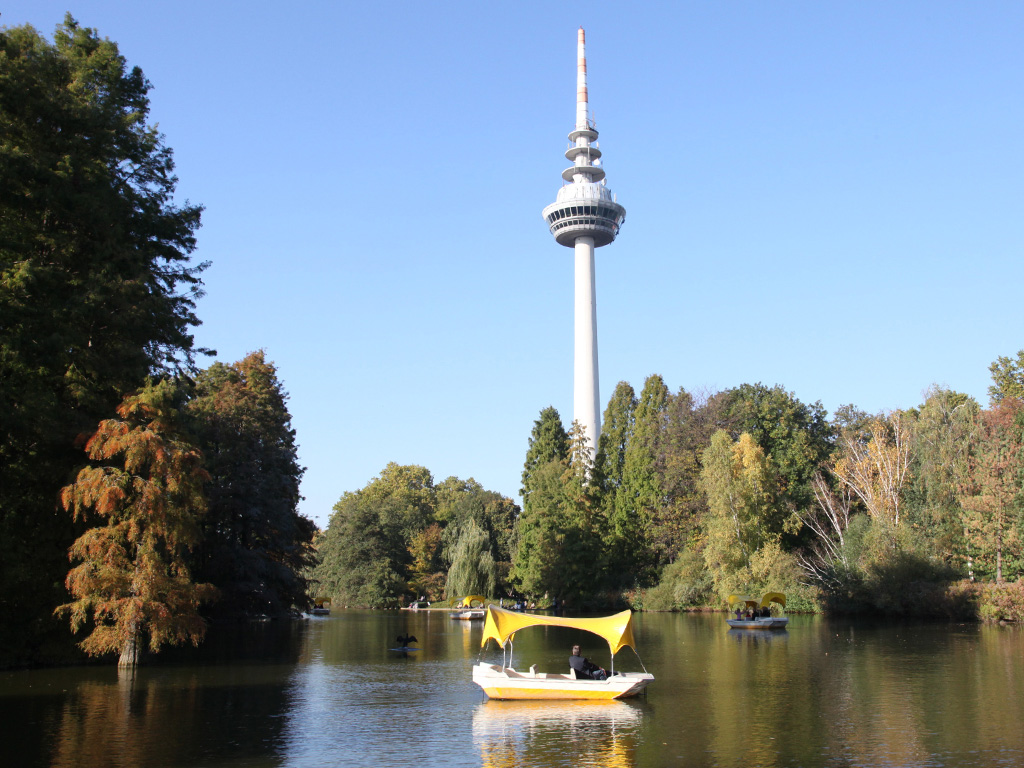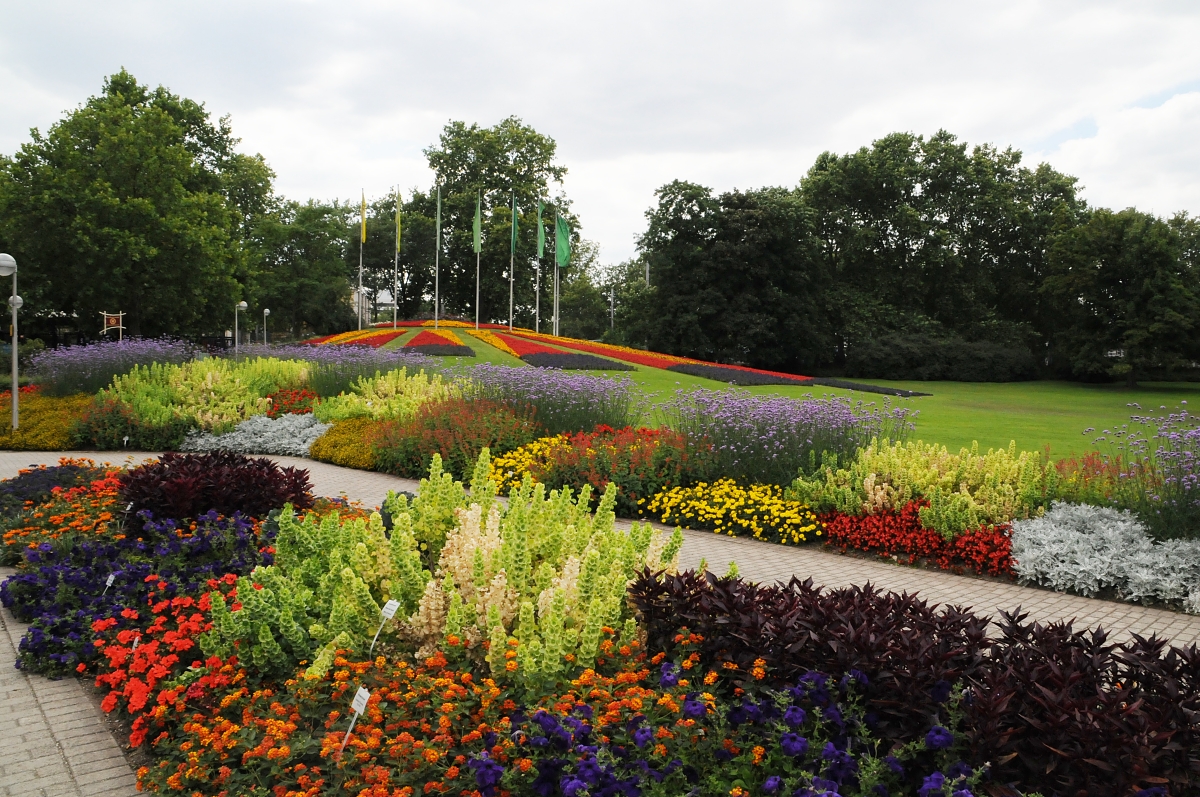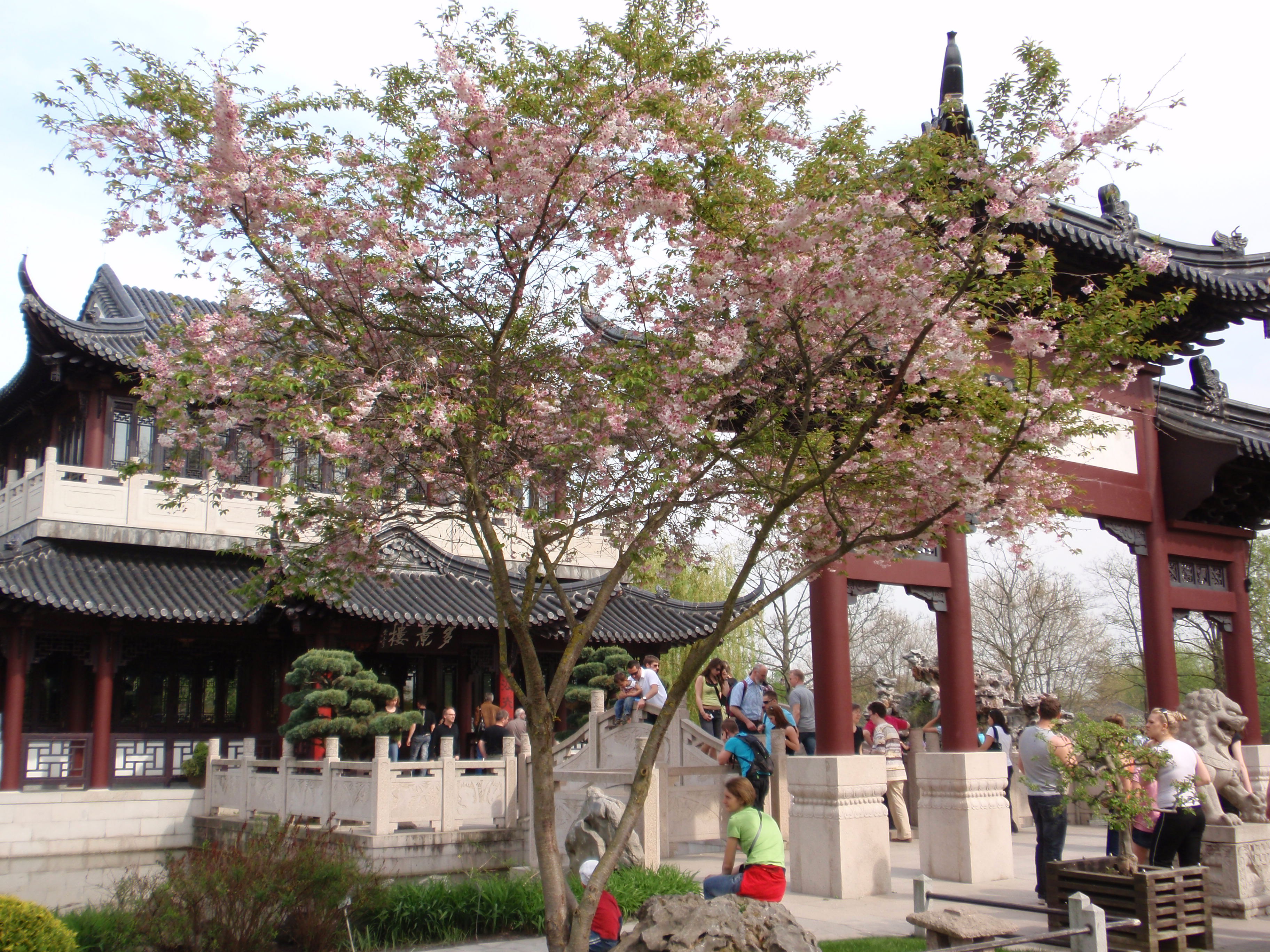Luisenpark Gondoletta 05.jpg on:
[Wikipedia]
[Google]
[Amazon]

 The Luisenpark is a municipal park in Mannheim, Baden-Württemberg, Germany. It is located on the left bank of the
The Luisenpark is a municipal park in Mannheim, Baden-Württemberg, Germany. It is located on the left bank of the


 The park contains a number of amusements and gardens, including a Chinese garden, rose garden,
The park contains a number of amusements and gardens, including a Chinese garden, rose garden,
Park map
Basic Information on the Park in english (City Marketing Mannheim)BGCI entry
{{Authority control Buildings and structures in Mannheim Botanical gardens in Germany Gardens in Baden-Württemberg Tourist attractions in Mannheim

 The Luisenpark is a municipal park in Mannheim, Baden-Württemberg, Germany. It is located on the left bank of the
The Luisenpark is a municipal park in Mannheim, Baden-Württemberg, Germany. It is located on the left bank of the Neckar
The Neckar () is a river in Germany, mainly flowing through the southwestern state of Baden-Württemberg, with a short section through Hesse. The Neckar is a major right tributary of the Rhine. Rising in the Schwarzwald-Baar-Kreis near Schwenn ...
river and has an area of 41 hectares. The lower Luisenpark (''Unterer Luisenpark'') is the oldest part which is conserved as a historic garden
Historic garden conservation is a specialised type of historic preservation and conservation or restoration concerned with historical and landmark gardens and designed landscapes.
Profession
Practitioners predominantly come from backgrounds in ho ...
. The upper Luisenpark (''Oberer Luisenpark'') includes various attractions, such as a greenhouse
A greenhouse (also called a glasshouse, or, if with sufficient heating, a hothouse) is a structure with walls and roof made chiefly of Transparent ceramics, transparent material, such as glass, in which plants requiring regulated climatic condit ...
, an arboretum
An arboretum (plural: arboreta) in a general sense is a botanical collection composed exclusively of trees of a variety of species. Originally mostly created as a section in a larger garden or park for specimens of mostly non-local species, man ...
, a Chinese garden
The Chinese garden is a landscape garden style which has evolved over three thousand years. It includes both the vast gardens of the Chinese emperors and members of the imperial family, built for pleasure and to impress, and the more intimate ...
, " gondoletta" boats, and a variety of facilities for children. Along with the Herzogenriedpark (33 hectares; located on the other side of Neckar) the upper Luisenpark is operated by the non-profit Stadtpark Mannheim GmbH.
History
The Luisenpark was built between 1892 and 1903, formed upon the legacy of scientist Carl William Casimir Fox, who bequeathed 20,000Deutsche Marks
The Deutsche Mark (; English language, English: ''German mark''), abbreviated "DM" or "D-Mark" (), was the official currency of West Germany from 1948 until 1990 and later the unified Germany from 1990 until the adoption of the euro in 2002. I ...
in his will to the city of Mannheim for the making of a new park. This amount was not sufficient for total financing, but formed a foundational start. Construction work began at the end of 1892. The design of the park was done by the Siesmayer brothers, Frankfurt landscape gardeners.
Conditions for the ascent of the Luisenparks for supraregional meaning was the resolution of the Mannheimer Mannheimer is a German language surname, meaning a person from Mannheim. Spelling variants include Manheimer and Mannerheim. It may refer to:
* Albert Mannheimer (1913–1972), American writer
*Anna Mannheimer (born 1963), Swedish journalist
*Cari ...
local council on November 18, 1969, to develop the Luisenpark as well as the Herzogenriedpark (to accomplish the Bundesgartenschau 1975). At that time the park was extended to a size of 41 hectares by the inclusion of a former racecourse.
The sales of 186,000 season tickets, which was not even reached by all federal horticultural shows, the number of 8.1 million visitors, and the removal of the Luisenpark fence, convinced the city council to operate the Luisenpark as city park with entrance fee. On October 21, 1975, the decision was made for a closed Luisenpark with an entrance fee. At first they agreed on two trial years, but over 38,000 annual tickets sold were a convincing argument to keep the park in this form.
Name
The Luisenpark is named after princess Luise Marie Elizabeth of Prussia, a close relative of threeGerman
German(s) may refer to:
* Germany (of or related to)
**Germania (historical use)
* Germans, citizens of Germany, people of German ancestry, or native speakers of the German language
** For citizens of Germany, see also German nationality law
**Ger ...
emperors: William I was her father, Frederick III was her brother and William II was her nephew.
On September 26, 1856, when she was eighteen-years old, she married the Prince Regent, later Grand Duke
Grand duke (feminine: grand duchess) is a European hereditary title, used either by certain monarchs or by members of certain monarchs' families. In status, a grand duke traditionally ranks in order of precedence below an emperor, as an approxi ...
of Baden, Frederick I. She carried out crucial pioneering work for the Wohlfahrtspflege in Baden. As an eighty-year-old, she, along with her daughter, Queen Victoria of Sweden
Sweden, formally the Kingdom of Sweden,The United Nations Group of Experts on Geographical Names states that the country's formal name is the Kingdom of SwedenUNGEGN World Geographical Names, Sweden./ref> is a Nordic country located on ...
, had to flee through a window from marauding soldiers attempting to take the castle in Karlsruhe.
Attractions


 The park contains a number of amusements and gardens, including a Chinese garden, rose garden,
The park contains a number of amusements and gardens, including a Chinese garden, rose garden, arboretum
An arboretum (plural: arboreta) in a general sense is a botanical collection composed exclusively of trees of a variety of species. Originally mostly created as a section in a larger garden or park for specimens of mostly non-local species, man ...
, and greenhouses for display and for tree ferns.
* The Kutzerweiher (40,000 m2), a lake forming a side-channel (slough) of the (old) Neckar
The Neckar () is a river in Germany, mainly flowing through the southwestern state of Baden-Württemberg, with a short section through Hesse. The Neckar is a major right tributary of the Rhine. Rising in the Schwarzwald-Baar-Kreis near Schwenn ...
river. Gondolettas, tow boat ride
A tow boat ride is a water ride constructed on a body of water. The course is defined by a main drive underwater cable, creating the
impression of free floating boats. The station could be a revolving platform.
Partial list of tow boat rides
...
: boats pulled by an underwater rope, follow a 1,840 meter long looped course around the lake.
* An open-air stage with approximately 1,000 seats has offered since 2006 a place for concerts, operas
Opera is a form of theatre in which music is a fundamental component and dramatic roles are taken by singers. Such a "work" (the literal translation of the Italian word "opera") is typically a collaboration between a composer and a libretti ...
, musical shows and plays.
* The Chinese garden (5,000 m2), named "garden of the many views" ( zh, 多景园 ''Duojingyuan'', german: Garten der vielen Ansichten), and its tea house were built in co-operation with Mannheim's Chinese twin city Zhenjiang (province Jiangsu), the Klaus Tschira
Klaus Tschira (7 December 1940 – 31 March 2015) was a German billionaire entrepreneur and the co-founder of the German software company SAP AG.
Life
After gaining his Diplom in physics and working at IBM, Tschira co-founded the German sof ...
charitable trust in Heidelberg, and the East Asia Institute (Ostasieninstitut) Ludwigshafen
Ludwigshafen, officially Ludwigshafen am Rhein (; meaning " Ludwig's Port upon Rhine"), is a city in the German state of Rhineland-Palatinate, on the river Rhine, opposite Mannheim. With Mannheim, Heidelberg, and the surrounding region, it form ...
. The donation of 1,77 million Deutsche Mark (DM) from the estate of Diplom
A ''Diplom'' (, from grc, δίπλωμα ''diploma'') is an academic degree in the German-speaking countries Germany, Austria, and Switzerland and a similarly named degree in some other European countries including Albania, Bulgaria, Belarus ...
-Kaufmann Georg Schmuck, provided the financial foundation for the garden and tea house.
* The ''Pflanzenschauhaus'' (2,700 m2), a greenhouse
A greenhouse (also called a glasshouse, or, if with sufficient heating, a hothouse) is a structure with walls and roof made chiefly of Transparent ceramics, transparent material, such as glass, in which plants requiring regulated climatic condit ...
and exhibition garden, is located at the site of the Palmenhaus (palm house) which was destroyed in the Second World War. It contains a butterfly house, bird exhibits, as well as salt and fresh water aquariums.
* Towering over the Luisenpark is a 205 meter high telecommunication tower (''Fernmeldeturm'') with its rotating restaurant at 125 meters above the ground.
* The ''Spielwiese'' (2,700 m2), a large playground
A playground, playpark, or play area is a place designed to provide an environment for children that facilitates play, typically outdoors. While a playground is usually designed for children, some are designed for other age groups, or people ...
and leisure meadow, located on the grounds of the original race track, borders on a model farm with domestic animals enclosures, and a Chinese tea house.
* The ''Heinrich-Vetter-Weg'' is a trail lined by more than 20 sculptures from the collection of Heinrich Vetter, by artists such as Amadeo Gabino
Amadeo is a Spanish and Portuguese name derived from the Latin name Amadeus. It may refer to:
People
* for people with the first name Amadeo
* Amadeo I of Spain (1845–1890)
* Amadeo Bordiga (1889–1970), founder of the Communist Party of Ita ...
, Kubach-Wilmsen, Ben Muthofer and Karlheinz Oswald
See also
* List of botanical gardens in GermanyReferences
*External links
*Park map
Basic Information on the Park in english (City Marketing Mannheim)
{{Authority control Buildings and structures in Mannheim Botanical gardens in Germany Gardens in Baden-Württemberg Tourist attractions in Mannheim